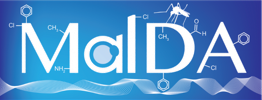Adaptive laboratory evolution in S. cerevisiae highlights role of transcription factors in fungal xenobiotic resistance.
Journal:
Communications biology, Volume: 5, Issue: 1Abstract:
In vitro evolution and whole genome analysis were used to comprehensively identify the genetic determinants of chemical resistance in Saccharomyces cerevisiae. Sequence analysis identified many genes contributing to the resistance phenotype as well as numerous amino acids in potential targets that may play a role in compound binding. Our work shows that compound-target pairs can be conserved across multiple species. The set of 25 most frequently mutated genes was enriched for transcription factors, and for almost 25 percent of the compounds, resistance was mediated by one of 100 independently derived, gain-of-function SNVs found in a 170 amino acid domain in the two ZnC transcription factors YRR1 and YRM1 (p < 1 × 10). This remarkable enrichment for transcription factors as drug resistance genes highlights their important role in the evolution of antifungal xenobiotic resistance and underscores the challenge to develop antifungal treatments that maintain potency.
